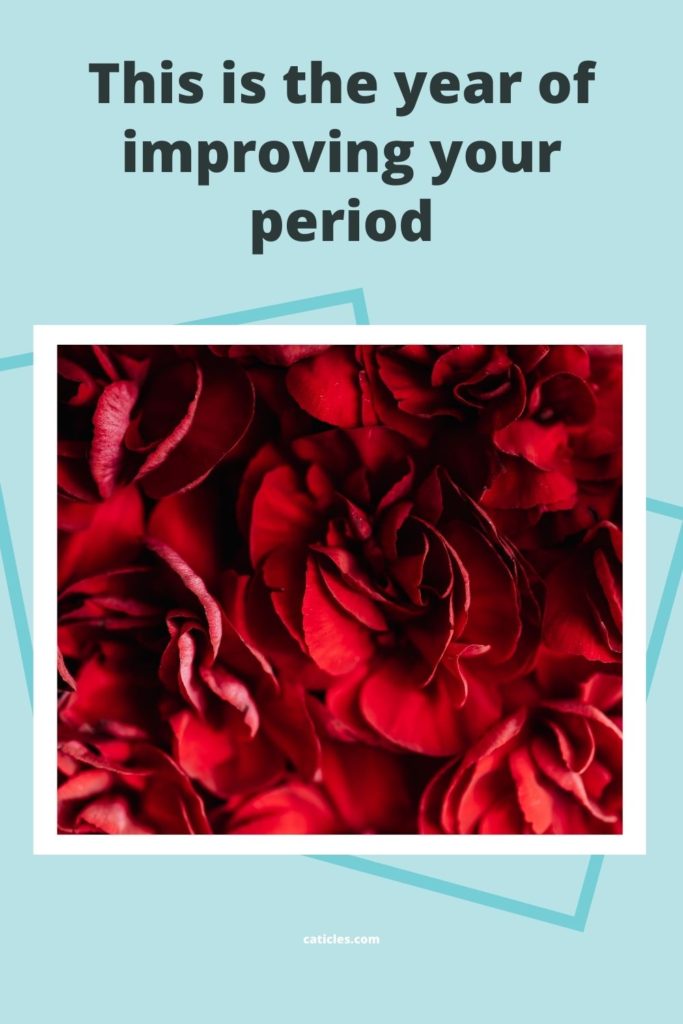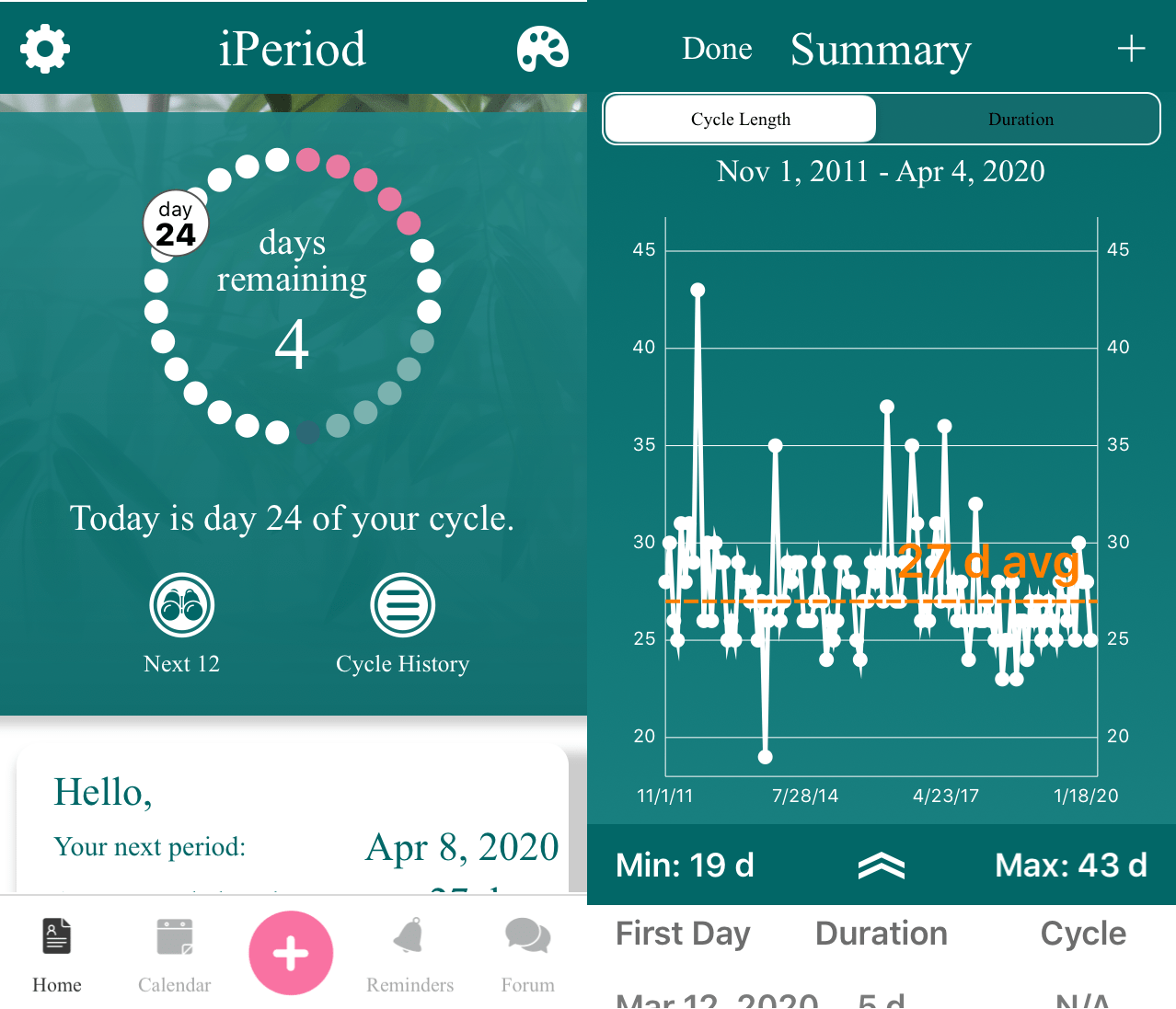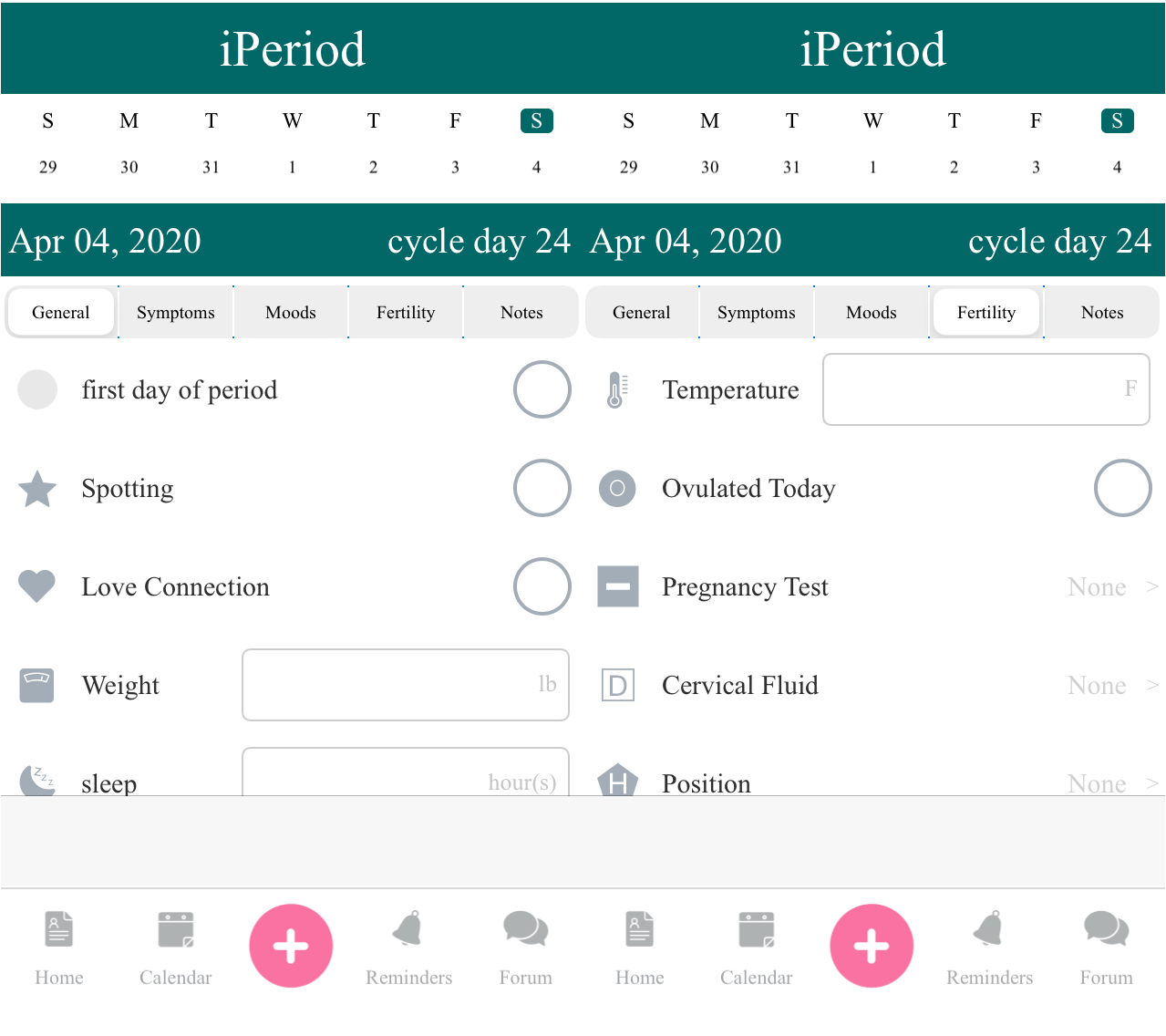These period tips and hacks helped me get over very painful PCOS, endometriosis, and PMS.
I eat certain foods and do specific activities during each phase of my menstrual cycle.
This lifestyle works with my body instead of against it.
These period hacks are based on our infradian rhythm.
Here are the best period tips and hacks:
- Track your period using an app
- Avoid eating fast food and processed food
- Eat fresh food specific to each period cycle phase
- Get the right exercise during each cycle phase
- Plan your work and social activities based on your period cycle
- Use period panties
Check out these period tips and hacks today or pin the image below to your Period Hacks board on Pinterest.

Disclaimer: I earn a commission if you make a purchase through affiliate links below. No additional cost to you.
What is the infradian rhythm?
Real quick, the infradian rhythm is a pattern of biological variation. Basically, women have different hormones increasing and decreasing during specific times of the month.
This affects our ability to absorb nutrients, our mood, how we feel physically, our social output, and so much more.
The period tips and hacks below work with our infradian rhythm instead of against it.
This helps our periods become completely pain-free!
1. Track your period using an app
Tracking your period is important so you know which cycle phase you are in.
This will help you map out your meal plan, exercise schedule, and activities properly.
The goal is to eat specific foods, exercise, and plan activities based on the cycle phase you are in.
I use the free version of iPeriod to track my period.
Here’s a quick summary of each period cycle phase.
Phase 1 – Menstrual
The menstrual phase starts the first day you start bleeding and ends on the last day of bleeding.
Technically the menstrual phase is part of the follicular phase.
Phase 2 – Follicular
The follicular phase includes menstruation up to ovulation. The average follicular phase lasts about 16 days.
Phase 3 – Ovulation
Ovulation occurs in the middle of your menstrual cycle. This typically only lasts 24 hours.
But the app that I use and period tips and hacks websites usually give a span of 4-5 days.
This is because we can’t pinpoint the exact 24 hours when ovulation happens.
Phase 4 – Luteal
The luteal phase is the time right after ovulation leading up to the menstrual phase.
The average length of the luteal phase is 14 days.
2. Avoid eating fast food and processed food
Our hormones are affected by diet, stress levels, and sleep. So we have to avoid certain foods that cause hormone imbalance.
Food to avoid for pain-free periods
Of course, everyone is different. But the main categories below can be a great start.
Soy
Soy isoflavones can bind to estrogen receptors in the body and cause either weak estrogenic or anti-estrogenic activity.
The Nutrition Source, Harvard.
Alcohol
In premenopausal women, chronic heavy drinking can contribute to a multitude of reproductive disorders. These include cessation of menstruation, irregular menstrual cycles, menstrual cycles without ovulation, early menopause, and increased risk of spontaneous abortions.
Alcohol and Hormones, NIH.
Sugar
Sugar not only provides major highs and lows in mood and energy, it can also disrupt one of the most powerful hormones in the body: insulin. And insulin is closely connected to all of the other hormones in your body, including estrogen and testosterone.
Women’s Health Network
Fast food and processed foods (salt)
Cook your own food rather than eating fast food or processed food because salt, like sugar, is hidden in a thousand places. Eating less salt is particularly recommended for patients with bloating, breast tenderness or swollen hands.
Health Essentials
Dairy
They can lead to an increase in the production of prostaglandins, which cause cramps. What’s more, the fats in dairy products are mostly saturated fats, which can cause inflammation and irritation and will only aggravate your period pain.
A.Vogel
Since everyone is different it’s important to use these as guidelines. And then adjust as necessary.
You can add notes in iPeriod on every day of the month. This can be helpful to track what you eat and how you feel.
For example, I completely eliminated all of these foods from my diet. Then I slowly added dairy back very gradually.
Additionally, I buy yogurt and ricotta cheese from the farmer’s market. Their dairy is minimally processed and comes from grass-fed and finished cows.
So the quality of that dairy is much better than most brands you find at the grocery store.
3. Eat fresh food specific to each period cycle phase
All of us need to eat more fresh food (including our cats!).
Fresh foods can nourish our bodies. And work with our hormones.
This results in a pain-free period.
Fruits and veggies
In several studies, vegetarian diets and/or the consumption of fruits and vegetables are related to the decrease of estrogen activity and therefore the decrease of the frequency of dysmenorrhea.
NCBI
Dysmenorrhea is the medical term for menstrual cramps.
I tried a plant-based diet for one year. But it didn’t work for me.
So I do eat eggs and meat daily. But the bulk of my diet is veggies.
And I buy animal products from local farms. Quality matters!
Omega-3 fatty acids
Omega-3 supplementation could reduce serum concentrations of testosterone and regulate menstrual cycle.
NCBI
Examples include salmon, tuna, flaxseed, chia seeds, and walnuts.
I don’t eat fish. But I might start adding a small amount to my diet.
For now, I eat seeds and nuts.
Iron
Women with menorrhagia lose significantly more iron per menstrual cycle on average than women with normal menstrual bleeding.
Vita Pharmed
Menorrhagia is the medical term for heavy periods.
Examples of iron-rich foods are quinoa, spinach, lentil, pumpkin seeds, eggs, and turkey meat.
Think of each cycle as a season.
Follicular is spring. This is when we should eat fresh, raw veggies and lighter meals.
Ovulation is summer. Continue to eat lighter meals and get lots of fiber and antioxidants.
Luteal is our fall. Eat lots of root veggies and stick to warmer, more fulfilling meals.
Menstruation is winter. Continue eating warm foods, especially bone broth and soup for the extra nutrients.
Period tips and hacks recipes
I love using recipes and guides from Dishing Up Balance and So Fresh So Green.
The template I follow is:
Breakfast – Dairy, veggie, fruit, nuts, seeds
I use either yogurt or ricotta cheese. And I add fruit, nuts, and seeds based on the cycle. For menstruation, I like to make oats so that I’m eating a warm breakfast.
I also try to sneak in a veggie. Roasted sweet potatoes, beets, and cauliflower all go great with fruit, nuts, and seeds.
Lunch – Eggs and veggies
I eat either raw or sauteed veggies based on the cycle that I’m in. Plus pickled veggies, raw garlic, and over-easy eggs.
Snack – Baked good or smoothie
Typically, I do fruit and veggie smoothies right after my period. Then leading up to my period and during my period I eat baked goods.
I personally have to avoid sugar. Even pure maple syrup and honey. I more than overdid my sugar intake over the years. So I look for recipes that use bananas as a sweetener instead.
My new favorites are chocolate banana bread and coconut flour chocolate pancakes. I like to use Your Super Magic Mushroom chocolate powder.
Dinner – Meat and veggies
I plug in whatever meat and veggies are appropriate for that cycle. For menstruation, I bulk up with quinoa and bone broth stew.
4. Get the right exercise during each cycle phase
Your body goes through a lot during the menstrual phase. So this is the time to relax and reflect inwards.
Light exercises like walking and stretching are best for the menstrual phase.
But right after menstruation, through follicular and ovulation, you have more energy. This is the time to do high-intensity workouts.
I like to use resistance bands during the follicular and ovulation phases.
The luteal phase is nearing your period so this is the time to slow down and get back to walking and stretching.
5. Plan your work and social activities based on your period cycle
Our brains work differently depending on the cycle phase we are in.
Isn’t this so cool?
During menstruation, it’s the perfect time to reflect inwards. What worked last month and what didn’t work? Evaluate your work life to see what needs to continue or change.
This is when I do my finances, evaluate YouTube analytics, and start planning my next month.
I’ve found that I have some bursts of energy and lots of ideas coming in during menstruation.
It makes sense because the follicular phase comes with lots of ideas and is forward-thinking.
We are more social during ovulation. So this is the perfect time to plan meetings and events with friends and family.
I’ve also noticed a big burst of energy during this phase. So this is when I’ll deep clean my apartment, take care of errands, and do anything else that requires more physical activity.
The luteal phase is when you get things done. I like to take care of last-minute stuff that requires energy so that I can relax during menstruation.
Putting it all together
Let’s put everything together before we talk about period panties.
Menstrual phase
- Productivity: This is the time to rest and reflect inwards. During this phase, the right and left side of the brain communicate the most. Now is prime time to evaluate. Look back to see what worked and what didn’t to make better decisions in your personal and professional life.
- Food: High protein, healthy fats, serotonin, and magnesium. Examples: leafy greens, quinoa, buckwheat, dark chocolate, spinach, pumpkin seeds, chicken, eggs, plant-based yogurts, nuts, beet, kale, kelp, and mushrooms.
- Exercise: Brisk walking and stretching are completely fine. But, keep it light and focus more on relaxation.
Follicular phase
- Productivity: The brain is open to new ideas and forward-thinking. Now is the time to start preparing and planning based on the evaluation you did during your period. Brainstorm ideas and create a vision for the rest of the month.
- Food: Lighter meals including lots of veggies like avocado, broccoli, artichoke, carrot, parsley, green peas, string beans, and zucchini. Plus, oats, eggs, nuts, and seeds.
- Exercise: You’ll have more energy during this phase. Since you’re planning new ideas, now is the time to start a new exercise class.
Ovulation phase
- Productivity: During this phase, you are more likely to be verbal and open. This is the time to catch up with friends and schedule your social events.
- Food: Focus on light and raw foods that have lots of fiber and anti-oxidants. Examples: asparagus, brussels sprouts, chard, escarole, scallion, spinach, quinoa, raspberries, strawberries, coconut, and guava.
- Exercise: Since you’re more social during this time, take a group exercise class. You can handle more strenuous exercise during this phase. So, don’t hold back!
Luteal phase
- Productivity: This phase is when you get things done. Follow through on all of your new ideas and work hard.
- Food: Try to avoid cold foods and consume warmer meals. Examples: cauliflower, collard greens, daikon, onion, parsnip, radish, squash, sweet potato, veggie or chicken soup, pumpkin, carrots, cucumber, brown rice, and herbal tea.
- Exercise: Since you are nearing your menstrual phase, scale back on intensity. Walking and pilates are perfect.
6. Use period panties
What we put in and on our bodies matters.
I started using period panties and washable menstrual pads back in 2017.
Since then, I’ve ditched the pads and just stick with period panties.
But I’ll never go back to traditional pads and tampons.
Currently, I use Thinx period panties. I like their organic cotton ones the most. You can read more about care in my period panties guide.
Do I have to follow this exactly?
No. Don’t make yourself go crazy.
The point of these hacks is to relieve stress and anxiety.
Use these period hacks as general guidelines. And start by changing one thing at a time.
For example, you can start with diet changes first. Test one new recipe a week and go from there.
Next, whenever you’re ready, test different exercises. Then, change your productivity.
Bring a DIY spa package with you if you’re traveling during your period.
Maybe your friends want to meet up when you aren’t feeling social. Do some light stretches and breathing to prepare beforehand.
Keep track of your mood and symptoms in a period tracker app or a journal.
Take a step back if you ever feel overwhelmed. And move at your own pace.


